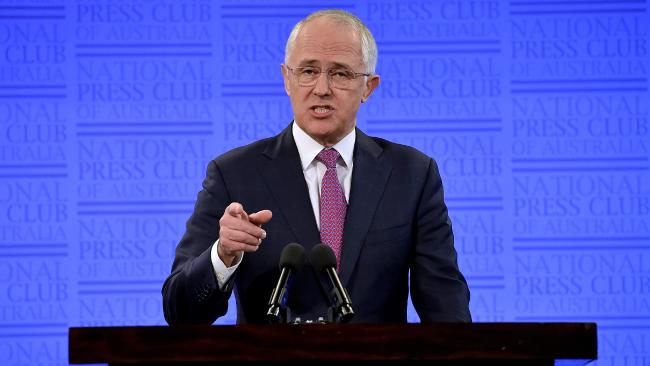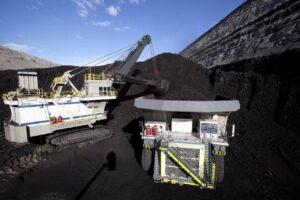Prime minister Malcolm Turnbull knows a thing or two about energy policy and climate change. His commitment to a carbon price cost him his job in 2009, and he spent the next few years advocating and endorsing policies and targets he supposedly believed in, even BZE’s zero emissions target.
He also has is own (very big) solar array and battery storage installation at his own (very big) home, and apparently likes to admire – in real time, with a monitoring device – how much power is being produced from the PV panels, how much is being stored in the batteries, and how much it is saving him on electricity bills.
His embrace and enthusiasm for energy “smarts” extends to electric vehicles, and his gushing praise for the Tesla Model S (wouldn’t that make for a nice addition to the ministerial fleet, powered by the solar array on Parliament House).

Which makes it all the more surprising, and somewhat disturbing, that Turnbull has emerged as prosecutor in chief, along with energy minister Josh Frydenberg, of what even leading business commentator Alan Kohler has described as a giant “hoax” over the Australian people – the push for new coal over wind and solar.
In recent weeks, as the relentless summer heatwave (the hottest summer in Sydney for 157 years of modern record), the campaign against renewables has reached Trumpian levels of false claims, fake news, paranoia and misleading comments.
“Cheap coal”, as former coal lobby chief Ian Dunlop suggests, is about as big a misnomer as “clean coal”, ignoring not only the massive subsidy it gets from having a free pass on pollution, but also the costs of building new plant.
But the Coalition campaign in favour of coal, and against renewables, is relentless, even after study after study is produced highlighting how wind and solar, even with integration costs, are a significantly cheaper option than sticking with a coal-based centralised grid.
Last week, the ANU released an analysis highlighting just that, echoing another detailed study last year from the CSIRO and the network owners lobby that put the savings of a high renewable grid at $100 billion over business as usual.
The main fossil fuel generators admit that building new coal power plants is not just a dumb idea, it is uninvestible.
And the financing secured for the third stage of one Australia’s biggest wind projects illustrates why. Electricity from the 109MW Hornsdale 3 project will deliver electricity to its customer, the ACT government, at a fixed price of $73/MWh for the next 20 years.
To put that in context – that is cheaper than electricity almost anywhere on the Australian grid at the moment. It is one-third of the cost paid by Queenslanders for electricity in February, one-half the cost paid in NSW, and it’s cheaper than the predicted prices in any state over 2017/18.
Indeed, that fixed price translates into a “today” price of around $60/MWh if you factor in inflation.
And the ACT government that commissioned this? They’re laughing. They know that their cost of electricity is capped for 20 years, but better than that, they get a refund from any excess. So if wholesale prices go above $73/MWh, which is where they are now, then the excess comes back to the ACT and its consumers.
Yet the Coalition continues on, digging themselves deeper into discredited and unfinanceable “clean coal” technologies such as IGCC. The world’s flagship project is at Kemper in the US, where $US7.1 billion has so far been invested and it still hasn’t produced anything.
In fact, just last week the CEO said it was too expensive to burn coal. So now, they are turning it into a gas plant, which they could have done from the outset at around one-tenth of the price.
But there’s no end of chancers who want to repeat such boondoggles, which is why Clive Palmer’s Waratah Coal has its hands out to the CEFC for money to fund a similar project to power the huge Galilee basin coal projects, and why others are promoting “refined coal”, a technology so absurd that even its fossil fuel proponents dumped it in the 1970s.
But where does the government get its information from? Hard to know as this exchange between Labor Senator Jenny McAllister and Treasurer Secretary John Fraser at a Senate Estimates committee reveals:
McAllister: As part of your energy analysis, have you performed any analysis on the cost of new coal-fired power stations compared to alternatives?
Fraser: No we haven’t.
McAllister: Have you formed a view on why so many industry players dismiss new coal plants as a viable option for new generation in Australia?
Fraser: No I haven’t. We’re consulting as widely as we can. It’s a very important issue and like everybody, it has crept up on us.
Crept up on us?
Meanwhile, gas power is still touted as the essential transition fuel. But it, too, is being priced out of the game.
The Australian Industry Group produced a report this week that pointed out there is no quick fix to the gas crisis, caused primarily for the huge rush to export Australia’s gas reserves to Asia and beyond. Those investment are not looking so great now, as the likes of Origin, Santos and others take huge write downs. But the impact will be felt in the domestic market for years to come.
The AIG report recognised that even if you did turn NSW and Victoria into a giant pin-cushion, with coal seam gas wells across the countryside, it would unlikely make much difference because it is an expensive way to extract gas. And the catch-22? The gas industry is more prone to the “death spiral”, where users turn to other technologies, leaving remaining customers to foot the bill for the huge infrastructure cost.
Australia’s high wholesale electricity prices this summer have partly been the result of the hefty cost of gas, but also the way that the market is controlled by a handful of gas generation plant owners who can more or less set the price as they please – unless there is competition from wind and solar.
Turnbull’s campaign against high prices ignores this, just as it ignores the soaring cost of networks, which has been responsible for the bulk of the price rises over recent years. This week, in the ACT, he talked of the problems faced by a data centre, whose electricity bill made up 20 per cent of the costs.
He, and they, should look around at what others are doing. The first big rooftop array in Melbourne was installed by data company NextDC, to defray electricity costs. They would do more if they were allowed to install rooftop solar on neighbouring buildings and use it without being lumped by huge network bills.
And what are the companies with the biggest data centres in the world doing? Apple, Google, Amazon are all well down the path to 100 per cent renewable energy – buying output from and commissioning wind and solar plant, because even in the US where electricity is cheap, wind and solar is even cheaper.
That doesn’t stop Coalition ministers just making stuff up. Christopher Pyne got pinged this week when he claimed that the Australian Submarine Corp had been forced to build a $20 million diesel plant to make sure the lights stayed on in case of a blackout in renewables-dominated South Australia. Asked about this, the CEO said “I don’t know anything about that.”
Liberal MP Dan Tehan confected outrage that Australia’s spy agency, and the secretive signals department, had been forced to switch to back-up generators to ensure the power stayed on during the recent heat-wave, when NSW’s electricity supply struggled to meet demand. Personally, I would have been outraged if the spy agency had not turned to back-up power.
Tehan tried to blame this on the dependence on renewables and the ACT 100 per cent renewable energy target. But ACT is part of the NSW grid, and that is nearly 90 per cent reliant on coal and gas, and it was renewables that held the fort on that day, while 1,000MW of coal-fired generation had a breakdown and another 1,000MW plus of gas-generation failed just when it was called upon by the market operator.
The same approach has been taken to the cause of blackouts and “load shedding” in South Australia and NSW. This has little, if anything, to do with the amount of renewable energy, but everything to do with the management of the grid, and unlocking the grip over the system held by incumbent technologies.
What hope is there that Turnbull & Co. will change course? Turnbull is actually deepening his ties with the fossil fuel industry, adding one key advisor from the Minerals Council to his personal staff and appointing the lobby group’s chair to the ABC board, despite her not making an independent short list.
The fossil fuel industry is returning the favour – hiring upended politicians like Sophie Mirabella and Adam Giles (both going Gina Rinehart’s Hancock group), and appointing former energy minister Ian MacFarlane to head the Queensland minerals council.
Even The Economist bought in to the debate this week, but it had one clear message which is just not being received in the toxic nature of Australia’s political debate.
Yes, there are issues, The Economist warned, but it’s in the design of the electricity system, not in the technology. The answer was not less wind or solar, but more.
“Policymakers should be clear they have a problem and that the cause is not renewable energy, but the out-of-date system of electricity pricing. Then they should fix it,” the magazine said.
Turnbull’s own chief scientist, Alan Finkel, has come to the same broad conclusion as the ANU, the CSIRO, the network owners, The Economist, and countless others: namely, that the energy transition is inevitable, that the technologies exist to make it secure and reliable, and that we should be getting on with it by sweeping away the policy and cultural barriers.










